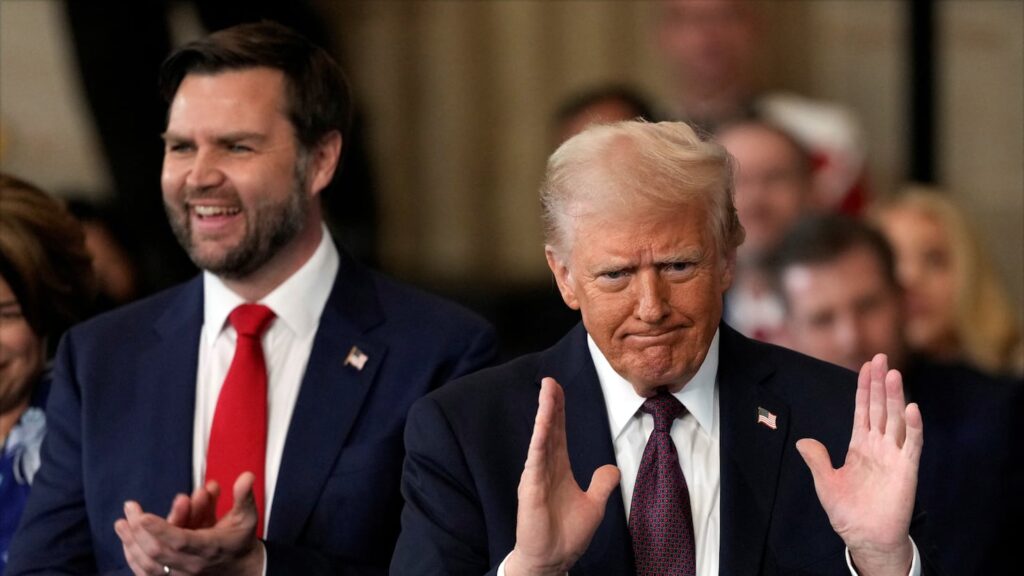Donald Trump has officially taken the oath as the 47th President of the United States, and he is beginning to lay down the foundations of his political agenda through the exercise of his executive powers. The president has already signed or expressed intentions to sign various executive orders addressing critical issues such as immigration, the economy, and sports.
The exclusion of transgender women and girls from competitive sports has emerged as a significant focus for certain segments of the Republican Party, with the president committing to take measures against these athletes. While this demographic constitutes a very small fraction of the population, the GOP’s emphasis on this topic underscores how divisive political strategies can serve to galvanize their electoral base. It remains uncertain whether this approach can maintain electoral support, even though it has successfully orchestrated two presidential victories, leading to full control over both the executive and legislative branches, only to lose that control to Democrats two years later. Meanwhile, Democratic performance has been underwhelming, as they navigate the opposition landscape to potentially regain voter support in the coming two years.
The attention devoted to women’s sports and the participation of transgender athletes by the Trump administration and the broader Republican political and media framework indicates the perceived significance of these issues within their base. Notably, only about 1 percent of Americans identify as transgender, with an even smaller number wishing to compete at elite sports levels. Despite this, Trump’s campaign prominently featured the call to ban transgender athletes from women’s sports, specifically targeting transgender women in school athletics.
The president emphasized that “men must be excluded from women’s sports.” Just a month earlier, he pledged to “eliminate the transgender madness,” stating “there will only be two recognized genders: male and female.” After his re-election, he confirmed that prohibiting transgender girls from competing in women’s sports would be a top priority from the very beginning of his term.
The Impact of These Policies on Intersex and Transgender Athletes, as Well as Cisgender Women
The intense focus on this issue, while energizing the Republican base, brings real harm to athletes simply aiming to compete. Instances of transgender women outperforming cisgender women at elite levels are exceptionally rare. However, the anxieties surrounding such scenarios were publicly highlighted during the recent Olympics, when Algerian boxer Imane Khelif faced false accusations of being transgender, resulting in significant backlash. Italian boxer Angela Carini, who initially made these comments, later issued an apology for the hate that Khelif received.
This incident illustrates a broader trend, as a binary categorization system for gender poses challenges for many aspiring athletes. By rigidly adhering to a two-gender framework, as Khelif’s experience demonstrates, cisgender women who compete in the women’s division also suffer. For instance, U.S. long-distance swimmer and 2024 Games gold medalist Katie Ledecky faced allegations of being transgender after online commentators circulated baseless “evidence” against her. Such behavior undermines the achievements of all women in sports, as their identity and capabilities come under scrutiny.
When policies enforce strict gender classifications, cases that challenge these binaries become politicized, often rendering individuals as adversaries within a larger narrative. Athletes who do not strictly conform to XX or XY chromosomal patterns face enormous hurdles in competitive structures favoring traditional categorizations.
Existing Guidelines and Future Consequences
For transgender athletes, the International Olympic Committee (IOC) has issued guidelines that allow individual sports federations to regulate participation. Organizations such as World Athletics, World Aquatics, UCI, and World Rugby have enacted bans on transgender athletes in elite competitions. In contrast, federations like the Ladies Professional Golf Association (LPGA) have introduced restrictions that prevent athletes who transitioned post-puberty from competing in designated categories.
As these discussions progress, it becomes evident that policies targeting transgender athletes risk further marginalizing an already vulnerable community while provoking critical debates about fairness, equity, and the essential role of diversity in sports—issues that persist in receiving inadequate resolution and engagement.


